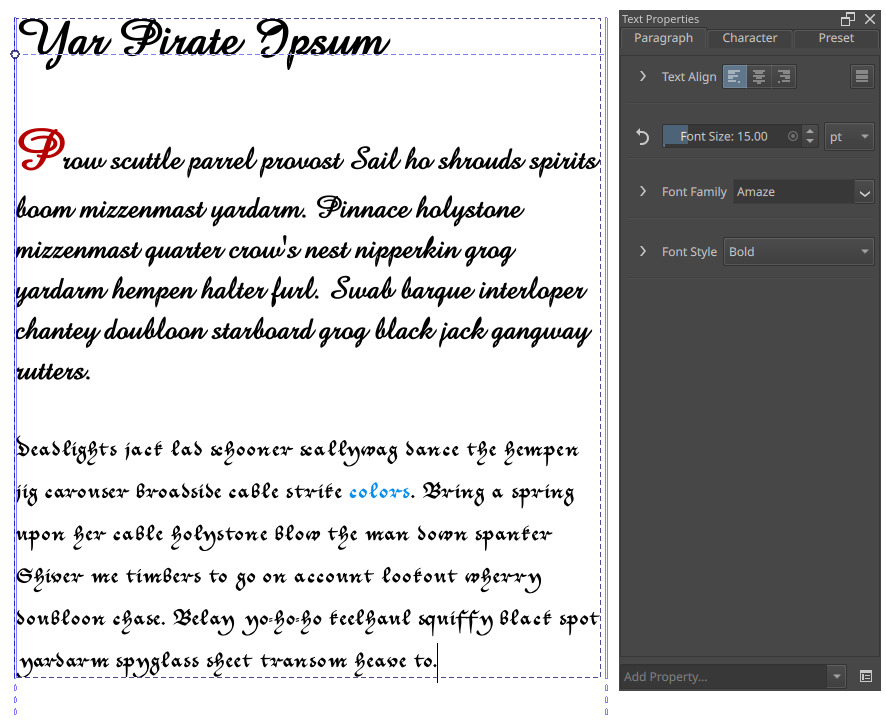Akademy is a special event for most of KDE people, it is opportunity for KDE developers, designers, users etc to meet and greet each other face-to-face. I have been attending most Akademies since year 2014. So of-course this year also I attended Akademy 2025 in Berlin. Last time I was in Berlin was right before pandemic happened, attending KDE Plasma Mobile Sprint in KDAB offices. It’s always lovely to visit this beautiful city!
Tuesday, 9 December 2025. Today KDE releases a bugfix update to KDE Plasma 6, versioned 6.5.4.
Plasma 6.5 was released in October 2025 with many feature refinements and new modules to complete the desktop experience.
This release adds three weeks’ worth of new translations and fixes from KDE’s contributors. The bugfixes are typically small but important and include:
View full changelogMonday, 8 December 2025
Naïvely, I ran freebsd-update -r 15.0-STABLE install in my regular FreeBSD desktop. That was a mistake.
In principle freebsd-update is the way to update the installed system. In principle it works really smoothly, from binary release to binary release:
it has a good manpage which tells you you can go from release to release. My FreeBSD laptop
(which also runs Fedora 42 as more of a daily-driver OS)
was running 14.3, so:
freebsd-update -r 15.0-RELEASE upgradeFetch all the things.freebsd-update -r 15.0-RELEASE installInstall the new stuff.rebootSmooth sailing.
That is the naive and optimistic thing to do.
If you spotted “make sure you read the announcement and release notes” in the manpage, good for you.
After the reboot, I was dropped into a shell where nearly every command I typed in resulted in
ld-elf.so.1: Shared object "libsys.so.7" not found, required by "libc.so.7"
Good Bug Reports Help
Fortunately, Graham Perrin had already reported this with basically-the-same steps to get into trouble.
And based on that Matthew and Colin made a fix so that
other people could first update their packages
(e.g. pkg update on the system before using freebsd-update)
to get the fixes in to the package-manager.
Good Workarounds, Also
In the same PR (Problem Report), Craig describes a workaround which almost worked for me.
Because it’s a laptop, I needed a few extra steps.
As an aside, /rescue is a directory where statically-linked rescue binaries live, which don’t suffer from shared-library misery.
/rescue/kldload if_ureLoad the kernel driver for the USB-ethernet port./rescue/dhclient ue0DHCP to get some network.
I have root-on-ZFS, and in single-user mode this comes up read-only,
so switch read-only off. This is different from other (e.g. UFS, ext4)
filesystems where mount -o rw,remount would be the thing to do:
/rescue/mountTo check what the name is of the ZFS mounted on//rescue/zfs set readonly=off zroot/ROOT/defaultMake it read-write.
Edit 2025-12-17: Fixed typo’s in the path of the commands
After that, basically Craig’s steps:
cd /tmp/rescue/fetch https://download.freebsd.org/releases/amd64/15.0-BETA2/base.txzFetch the installation tarball.cd //rescue/tar xzf /tmp/base.txz lib/libsys.so.7Extract the missing library.freebsd-update installThis one is the “normal” dynamically-linked one, which works now the missing library is there.
Post-Upgrade Mucking About
Since there wasn’t anything especially configured or complicated on this machine, I reinstalled the package-manager with a hammer and then upgraded all the packages:
pkg-static install pkgReinstall with a known-good tool.pkg updateFetch all the things.pkg upgradeInstall all the things.
Somehow I’ve also gotten myself stuck in a “graphics driver causes kernel panic”,
state. Which kind of limits the graphics side of things this week. Amusingly AMD GPU stability is listed as a release feature, but #391 and #393 issues tell a slightly different story. I’m glad of bz@’s proposed fix, although I’ll need to rebuild the kernel to try it (which literally means make buildkernel installkernel on FreeBSD, it’s that simple).
The attentive reader will note that yes, Akademy happened in September already. Not the most prolific blogger. Not the most prolific contributor either. But I had already drafted much of this post two months ago, so let's get it out the door. I'll cut all the paragraphs about fun social outings and focus on recapping stuff related to our Input Goal.
A special thank-you to Farid, of Kdenlive and KDE Goals coordination fame, who convinced me to take the trek when I thought perhaps I shouldn't cross the Atlantic twice in a year. I'm glad I went, tons of great sessions and conversations. Powered by your donations, KDE e.V. supported my travel costs and made it possible for me to coordinate with many KDE people in person. Thank you. Yes, you! Anyway.
Talking input
I met my fellow Input Goal co-initiator Gernot (Duha on Matrix) in person for the first time. Together, and alongside reports on the other KDE goals, we delivered our presentation summarizing one year of input improvements. The KDE community made some excellent progress since the goal was chosen, thanks to everyone who contributed towards it! At the same time, there is more work to do and we'd love to see further contributions. Watch the talk for more details.

Our third Input Goal champion, Joshua Goins, had so much to report on improvements for drawing tablet users that he held an entire presentation on that particular topic.
One particular highlight for me was running into Dorota. She has been pushing for improvements to Wayland's input method protocols and had joined our input handling community on Matrix over the past year. Listening to Dorota's cross-desktop experience and plans was super interesting, and I was happy to see her coordinate with KWin maintainers over the course of Akademy. In the time since, some of Dorota's work was included in the latest upstream release of Wayland Protocols as experimental addition. Hopefully this will be further refined and standardized over time.
Andy Betts sat down with me to discuss the UI designs for touchpad gesture customization, following earlier back-and-forth with Natalie and Nate over the summer. Xaver Hugl provided some great feedback at Akademy about my ongoing patch series to implement stroke gesture support in KWin. He also proposed a change that will help with integrating config file support for gesture customization into KWin. This is all still in the works - full disclosure, I've been having somewhat of a hard time recently for unrelated reasons. It now has path simplification (for performance reasons) plus a nice stroke drawing visualization, but still lacking tests and such. Christmas time seems as good a time as any to pick up some slack and push this forward.
In more exciting news, KDE's new on-screen keyboard has seen a significant amount of work in the last few months. Aleix Pol's initial prototype for Plasma Keyboard was supercharged by Devin Lin, who also made it to Akademy but had to take off early. We decided to release Plasma Keyboard independently first, then integrating it into regular Plasma releases in 2026. This 0.1 preview release is now available, you can check if your distribution already ships it, or you can grab the nightly Plasma Keyboard Flatpak to test its latest state. Yes, even input methods will run just fine as Flatpaks.
Meanwhile, somewhere far away across the ocean, a remote partipant was going full steam ahead on another important piece in the input handling puzzle.
GSoC project: Game controller support in KWin
For this year's Google Summer of Code, Yelsin Sepulveda was accepted to improve game controller support in KWin with mentorship by Xaver Hugl and myself. After a strong start, Yelsin was forced to delay the second part of his project due to personal circumstance and Google did not agree to a deadline extension. However! With an excellent work ethic, Yelsin still continued to work on the project and brought it to completion regardless of Google's official approval. The result is an opt-in KWin plugin that's close to getting merged, and will:
- Make KWin aware of game controllers in the first place,
- Prevent system sleep on controller activity,
- Emulate mouse and keyboard input when no other game (or app) uses the controller,
- Deal with the Steam Controller's idiosyncratic "Lizard Mode".
- Provide the foundation for future game controller customization in Plasma.
From the KDE side, we consider this GSoC project a resounding success. If you missed Yelsin's own posts on Planet KDE, his blog posts from mid September and early October cover a lot more detail.
Other exciting developments
Some presentations and conversations that I found particularly compelling, not focused on input.
Thanks to Bhushan Shah, Plasma now knows what made your system wake up from system sleep. Building on this, power management primarily for Plasma Mobile but also Plasma Desktop can improve even further, including the potential for scheduled background tasks and going right back to sleep.
Linux distros have been kind to KDE this year. Neal Gompa presented the Fedora KDE SIG's long-term efforts to ship a premium Plasma experience. Terrific work from these folks, this is now my current favorite distro suggestion for friends & family. Furthermore, Harald Sitter presented the Alpha release of KDE Linux, now happily chugging along on its way to becoming a Beta. This is what I hope to install on my parents' laptops one day. I took a banana from Harald in return for promising that I'll test it out myself. Didn't say when; nonetheless, the promise stands.
I was not expecting to find myself talking to GNOME contributors at Akademy, but Lorenz Wildberg from the GNOME Foundation's Board of Directors was a super interesting conversation partner. Long story short, both GNOME and KDE know about their respective shortcomings and are trying to learn from each other's experiences. Sometimes by adopting things that work, sometimes by taking a different route, sometimes just by focusing on our existing strengths and building on those. Either way, listening and reflecting will beat low-effort snark anytime. SDK evolution, contributor onboarding, governance, fun times.
Looking back and ahead
Yes, I lost a few weeks from getting a back injury soon after Akademy. The good news is that it's pretty much all healed at this point. But my contribution habits have remained out of whack since. I'm hoping to get this back on track asap, because I also really want to help KDE to reach the inflection point. Gamers, governments and many more people have something to gain if the Linux desktop breaks out of its niche into the mainstream. The tech industry has been disappointing to me on so many fronts. This here, though, is something I'm excited to see happening.
Sunday, 7 December 2025
Like in the years before, KDE does an end of the year fundraiser campaign.
Beside that Plasma will show some small popup to ask if you want to sponsor us with a donation.
It looks like this year that is already going well, below the state as of today, 7th December 2025.

I want to say to all that already donated: Thanks a lot!
I will not personally get any money from that, but I will benefit largely from the stuff KDE e.V. funds with it, like the infrastructure, some people working on our stuff and the very important sprints and conferences!
Keep the money flowing, money is not everything, but if you can not contribute in another way and you have some spare money, please consider a donation.
I wish you all a good end of the year :)
Discussion
Feel free to join the discussion at the Linux reddit.
A week full of fixes
Welcome to a new issue of "This Week in KDE Apps"! Every week (or so) we cover as much as possible of what's happening in the world of KDE apps.
Our End of the Year fundraiser is still going on and we’ve raised more than €140,000 so far this month. Thanks to everyone who donated!
Getting back to all that's new in the KDE App scene, let's dig in!
PIM Applications
Akonadi Background service for KDE PIM apps
Tobias Leupold fixed a compatibility issue with MariaDB 12.1 (25.12.0 - pim/akonadi MR #310)
Carl Schwan optimized some maintenance routines from Akonadi; this also fixes an issue when running on SQLite (25.12.0 - pim/akonadi MR #299).
KMail A feature-rich email application
Andreas Hartmetz fixed a bug where mail filters would be deleted in some situations (25.12.1 - pim/kmail MR #164).
Graphics Applications
Photos Image Gallery
Noah Davis added a setting that allows enlarging small images. Without this option the minimum zoom level is 100% (26.04.0 - graphics/koko MR #251).
Creative Applications
Krita Digital Painting, Creative Freedom
Luna Lovecraft fixed a crash that occurred when the window was too small to fit a selection actions panel (graphics/krita MR #2548) and also fixed the selection panel blinking when making a new selection (graphics/krita MR #2551).
Wolthera van Hövell split the character and paragraph properties, making it more intuitive to apply text transformations to just one character or to a whole paragraph (graphics/krita MR #2470).

Joshua Goins fixed a crash in the Krita plugin manager when using Python 3.14 (graphics/krita MR #2451).
Utilities Applications
Calculator A feature rich calculator
Devin Lin cleaned up the sidebar and removed some custom code.
| Mobile | Desktop |
|---|---|
 |  |
Recorder Audio recorder
Tobias Burnus made his first contribution to KDE and fixed an issue where the list of audio input sources contained duplicated entries (25.12.0 - utilities/krecorder MR #62).
Kate Advanced text editor
Leia uwu fixed a crash in the project tree view (25.12.0 - utilities/kate MR #1950).
Keysmith Two-factor code generator for Plasma Mobile and Desktop
Shubham Arora fixed an issue where the account name could overflow when it was too long (25.12.1 - utilities/keysmith MR #171).
| Before | After |
|---|---|
 |  |
…And Everything Else
This blog only covers the tip of the iceberg! If you’re hungry for more, check out Nate's blog about Plasma and be sure not to miss his This Week in Plasma series, where every Saturday he covers all the work being put into KDE's Plasma desktop environment.
For a complete overview of what's going on, visit KDE's Planet, where you can find all KDE news unfiltered directly from our contributors.
Get Involved
The KDE organization has become important in the world, and your time and contributions have helped us get there. As we grow, we're going to need your support for KDE to become sustainable.
You can help KDE by becoming an active community member and getting involved. Each contributor makes a huge difference in KDE — you are not a number or a cog in a machine! You don’t have to be a programmer either. There are many things you can do: you can help hunt and confirm bugs, even maybe solve them; contribute designs for wallpapers, web pages, icons and app interfaces; translate messages and menu items into your own language; promote KDE in your local community; and a ton more things.
You can also help us by donating. Any monetary contribution, however small, will help us cover operational costs, salaries, travel expenses for contributors and in general just keep KDE bringing Free Software to the world.
To get your application mentioned here, please ping us in invent or in Matrix.
Saturday, 6 December 2025
Welcome to a new issue of This Week in Plasma!
This week saw a bunch of user interface improvements and bug fixing, especially for the drawing tablets, printers, and monitors. Hardware is quirky!
But of course that’s not all; check out the rest, too:
Notable UI Improvements
Plasma 6.6.0
You can now Alt+click/double-click on desktop items to see their properties, just like you can in Dolphin. (Méven Car, plasma-desktop MR #3349)
When a printer runs low on ink for multiple cartridges simultaneously, all the messages about this are now condensed into a single notification, instead of showing a separate notification for each low ink cartridge. (Mike Noe, print-manager MR #291)
System Settings’ Drawing Tablet page now makes it more obvious when the lack of configurable pad buttons is due to a missing driver. (Joshua Goins, plasma-desktop MR #3234)
Spectacle now offers a Cancel button in the rectangular region overlay, so you can get out of it without having to press the Esc key. (Taras Oleksyn, bug #490980)
Locking the screen from the Application Launcher widget now closes it before locking so it’s not somewhat awkwardly left open after you unlock. (Christoph Wolk, bug #508725)
On distros that make you authenticate to toggle the feature to set the date and time automatically, closing the authentication window without authenticating no longer makes the page complain about an error. (David Edmundson, bug #501966)
Apps launched from the Favorites view of the Kickoff, Kicker, and Dashboard widgets are now added to the “Recent Apps” section. (Christoph Wolk, bug #449834 and bug #435356)
Did a pass over several pages in System Settings to make sure they follow the KDE Human Interface Guidelines more closely. (Nate Graham, plasma-desktop MR #3309)
You’re no longer allowed to try to change the usernames of logged-in users, since this doesn’t work anyway. (Nate Graham bug #469665)
You’re now warned about the potential consequences if you try to disable the System Tray’s built-in Notifications widget, since those consequences may not be obvious. (Nate Graham, plasma-workspace MR #6044)

Notable Bug Fixes
Plasma 6.5.4
Fixed an issue that made the Orca screen reader’s “learn” mode speak too much and send extraneous keystrokes to apps. (Nicolas Fella, bug #512189)
Fixed an issue that could occasionally cause a crash when charging your system after the critical battery level notification appeared. (Anthony Fieroni, powerdevil MR #594)
Fixed an issue that made the screen turn black with certain older monitors directly connected via an analog VGA cable. (Xaver Hugl, bug #512146)
Fixed another source of the issue that made desktop icons move to the wrong screen of a multi-screen arrangement on login. (Błażej Szczygieł, bug #512381)
Fixed an issue that made it impossible to configure certain buttons of the Wacom Pen Pro 3D stylus. (Joshua Goins, bug #511488)
System Settings’ Drawing Tablet page now does a better job of handling weird tablets that say they have two styluses when they really only have one. (Joshua Goins, bug #508084)
Fixed an issue that made Plasma inaccurately warn that your printer was low on ink when it sent an unexpected ink level code but wasn't actually low on ink. (Mike Noe, bug #512602)
Fixed an issue that made the Task Manager widget’s “Forget recent [thing]” menu items unreliable for certain apps. (Méven Car, bug #480276)
Fixed a visual glitch in the Track Mouse effect when using a high DPI scale factor. (Xaver Hugl, bug #510029)
Plasma 6.6.0
Fixed an issue that made the Task Manager widget’s “Forget” action for specific files only take effect after Plasma was restarted. (Christoph Wolk, bug #503840)
Frameworks 6.21
Fixed an issue that could crash the open/save dialogs when you double-clicked on a column header while in Details mode. (David Edmundson, frameworks-kio MR #2070)
Fixed an issue that could make popups invoked from folders on the desktop misbehave when created from symlinks. (Lluc Simó Margalef, bug #479350)
Frameworks 6.22
Fixed an issue in the Quick Launch widget that made icons start dragging after right-clicking them. (Jonathan Marten, bug #384009)
Other bug information of note:
- 5 very high priority Plasma bugs (same as last week). Current list of bugs
- 37 15-minute Plasma bugs (up from 36 last week). Current list of bugs
Notable in Performance & Technical
Plasma 6.6.0
Implemented support for for per-DRM-plane color pipelines. (Xaver Hugl, kwin MR #6600)
Plasma now re-checks the battery level after waking from sleep, which handles the case of the battery draining (or charging) while asleep in such a manner that it would be appropriate to show or hide a notification about the battery level. (Ramil Nurmanov, powerdevil MR #592)
How You Can Help
Donate to KDE’s 2025 fundraiser! It really makes a big difference. Believe it or not, the fundraiser has topped €100,000! And that’s just for the fundraiser itself; the yearly donation pop-up has also raised another €100k in just the past five days (!!!).
It’s kind of amazing. This money will help keep KDE strong and independent for years to come, and I’m just in awe of the generosity of the KDE community and userbase. Thank you all for helping KDE to grow and prosper!
If money is tight, you can help KDE by directly getting involved. Donating time is actually more impactful than donating money. Each contributor makes a huge difference in KDE — you are not a number or a cog in a machine! You don’t have to be a programmer, either; many other opportunities exist.
To get a new Plasma feature or a bugfix mentioned here, feel free to push a commit to the relevant merge request on invent.kde.org.
Friday, 5 December 2025
Let’s go for my web review for the week 2025-49.
Steam Machine today, Steam Phones tomorrow
Tags: tech, valve, gaming, foss
Don’t trust the title, it misrepresent the content in my opinion. Still the interview is interesting, it shows quite well all the effort Valve is pouring into the Free Software ecosystem.
https://www.theverge.com/report/820656/valve-interview-arm-gaming-steamos-pierre-loup-griffais
Reranking partisan animosity in algorithmic social media feeds alters affective polarization
Tags: tech, social-media, politics, science, research, psychology
A paper showing that social media algorithms foster political polarization and societal division. Who knew?? Sarcasm aside, the real value of the paper is showing that by modifying those algorithms we could quickly have positive effects. Most of the participants didn’t even notice they changed how they perceive others.
https://www.science.org/doi/10.1126/science.adu5584
How Should We Peer Review Software?
Tags: tech, science, research, politics
This is indeed one of the big issues of the computer science research community. It’s also something of importance in fields relying on simulations… which is almost all scientific fields nowadays. Peer reviewing the paper is well practiced, but the software is another story entirely. It’d require some investment in research… but that’s not where we’re headed at all.
https://mirawelner.com/posts/peer_review.html
How big tech is creating its own friendly media bubble to ‘win the narrative battle online’
Tags: tech, business, politics, journalism
Unsurprisingly the big tech players want their own information bubble too. This kind of propaganda machine isn’t really new, but they feel like they need their own now.
https://www.theguardian.com/technology/2025/nov/29/big-tech-silicon-valley-ceo-media
Datacenters in space are a terrible, horrible, no good idea.
Tags: tech, hardware, geospatial
I don’t even get why this became a topic of conversation but here we go. At least this thought experiment is a good way to learn about electronics in space.
https://taranis.ie/datacenters-in-space-are-a-terrible-horrible-no-good-idea/
AI Is still making code worse: A new CMU study confirms
Tags: tech, ai, machine-learning, copilot, quality, programming
The trend keep being the same… And when the newer models will be trained on FOSS code which degraded in quality due to the use of the previous generation of models, things are going to get “interesting”.
https://blog.robbowley.net/2025/12/04/ai-is-still-making-code-worse-a-new-cmu-study-confirms/
Google Antigravity Exfiltrates Data
Tags: tech, ide, ai, machine-learning, copilot, security
IDEs allowing to spawn actions in the user environment are still a big security risk.
https://www.promptarmor.com/resources/google-antigravity-exfiltrates-data
GitHub → Codeberg: my experience
Tags: tech, git, tools, forgejo, github
This kind of migration is apparently easier than it sounds.
https://eldred.fr/blog/forge-migration/
pgFirstAid - PostgreSQL Health Check
Tags: tech, databases, postgresql, reliability, performance, health
Looks like a nice kit to add to your tool belt. Does some handy checks if you have a Postgres database to manage.
https://randoneering.tech/blog/pgfirstaid/pgfirstaid/
So you wanna build a local RAG?
Tags: tech, ai, machine-learning, search, self-hosting, foss
This is getting more and more accessible. It’s also one of the uses which makes sense for LLMs.
https://blog.yakkomajuri.com/blog/local-rag
Landlock-ing Linux
Tags: tech, linux, kernel, security, sandbox
This is a nice application level sandboxing feature on Linux. We should probably have more applications use it.
https://blog.prizrak.me/post/landlock/
How CRDTs and Rust are revolutionizing distributed systems and real-time applications
Tags: tech, rust, crdt, distributed
I admit I like CRDTs as well. They really are the foundation of cool use cases. Of course it raises questions related to security to broker properly the sessions between users. Still, it’s nice to see them more and more used.
In defense of lock poisoning in Rust
Tags: tech, multithreading, rust, safety, failure
Very Rust focused, still it’s an interesting debate. It gives a good overview of the different types of lock behaviors in case of failures. It’s very much advocating for the poisoning approach which is indeed an interesting one (coming with its own tradeoffs of course).
https://sunshowers.io/posts/on-poisoning/#fnref:1
Rust pattern: Display adapter
Tags: tech, rust, design, pattern
Another illustration of how to use a new type to declare intent for display of values.
https://articles.bchlr.de/display-adapter-pattern
Out of the Box Dynamic Dispatch
Tags: tech, rust, type-systems
Shows that you don’t always need to put stuff in Box to get dynamic dispatch.
https://llogiq.github.io/2020/03/14/ootb.html
An Array of Pointers vs. a Multidimensional Array
Tags: tech, c, c++, memory
A reminder that small details at declaration can have large impacts on memory layouts.
https://nullprogram.com/blog/2016/10/27/
Standard Ranges
Tags: tech, c++
An old one now, but still a very good overview of what C++ ranges brought to the table.
https://ericniebler.com/2018/12/05/standard-ranges/
How to choose good names in your code
Tags: tech, quality, craftsmanship, c++
It’s all written oriented toward C++ use. That said I think most of it equally applies whatever the language.
https://www.fluentcpp.com/2017/01/30/how-to-choose-good-names/
Treat test code like production code
Tags: tech, tests, quality
This needs repeating but yes, quality matters in test code too.
https://blog.ploeh.dk/2025/12/01/treat-test-code-like-production-code/
Architectural debt is not just technical debt
Tags: tech, architecture, business, organization
This is a good way to see that the architecture questions are multi-layered. And yes, in enterprise contexts they go all the way to the company strategy level.
https://frederickvanbrabant.com/blog/2025-10-31-architectural-debt-is-not-just-technical-debt/
Maximizing Developer Effectiveness
Tags: tech, organization, team, productivity, devops, developer-experience
A bit too high on the “positive caricature scale” to my taste. That said there’s a kernel of truth there, focusing on the developer experience will lead to improved impact.
https://martinfowler.com/articles/developer-effectiveness.html
How to do effective video calls
Tags: tech, remote-working, video, conference
I agree with most of the points here. They make all the difference. The audio is too often underestimated.
https://martinfowler.com/articles/effective-video-calls.html
Reflections of an “Old” Programmer
Tags: tech, engineering, career, learning, knowledge
Some areas of our industry are more prone to the “fashion of the day” madness than others. Still there’s indeed some potential decay in what we learn, what matters is finding and focusing on what will last.
https://www.bennorthrop.com/Essays/2016/reflections-of-an-old-programmer.php
On Being A Senior Engineer
Tags: tech, engineering, craftsmanship, expertise, knowledge, learning
An old one and a bit all over the place. Still, plenty of interesting advice and insights.
https://www.kitchensoap.com/2012/10/25/on-being-a-senior-engineer/
Software Failures and IT Management’s Repeated Mistakes
Tags: tech, quality, project-management, ethics, risk, failure
Decades that our industry doesn’t improve its track record. But there are real consequences for users. Some more ethics would be welcome in our profession.
https://spectrum.ieee.org/it-management-software-failures
We see something that works, and then we understand it
Tags: science, research, knowledge, innovation
Indeed, innovation is far from being a linear process. It’s actually messy, the breakthroughs already happened already and we describe it after the facts.
https://lemire.me/blog/2025/12/04/we-see-something-that-works-and-then-we-understand-it/
Lazy Expert Syndrome: How to Stay on Top of Your Game
Tags: learning, teaching, mentoring
Or why it’s important to mentor others and not stay in your own bubble.
https://www.riskology.co/lazy-expert-syndrome/
Grow slowly, stay small
Tags: business, management, life, work, craftsmanship
An excellent piece, I like this kind of thinking. It works in fact as several level in your life.
https://herman.bearblog.dev/grow-slowly-stay-small/
Interviewing for Evidence
Tags: hr, interviews
Lots of good advice for better interviews. I like the structure it brings making sure you got balanced evidences.
https://dannorth.net/blog/interviewing-for-evidence/
A Brief, Incomplete, and Mostly Wrong History of Programming Languages
Tags: tech, programming, language, satire, funny
OK, this is old so I wish it’d go beyond 2003. Still, that’s quite a funny read.
http://www.nerdware.org/doc/abriefhistory.html
Your next gaming dice could be shaped like a dragon or armadillo
Tags: tech, physics, mathematics, funny, research
Definitely fun research. Let’s not be fooled though it also has practical use.
Bye for now!
A new version of Plasma Camera and Plasma Settings have been released
We have a new release of Plasma Camera and Plasma Settings!
Plasma Camera changes:
- Fix compile with libcamera 0.6.0 (MR)
- New translations
Plasma Settings changes:
Visit /info/independent-releases-25-12 for the tarballs.
Please note: most Plasma Mobile software is now shipped under the Plasma or KDE Gear release cycles.
 toscalix
toscalix



 @jpetso:kde.org
@jpetso:kde.org

